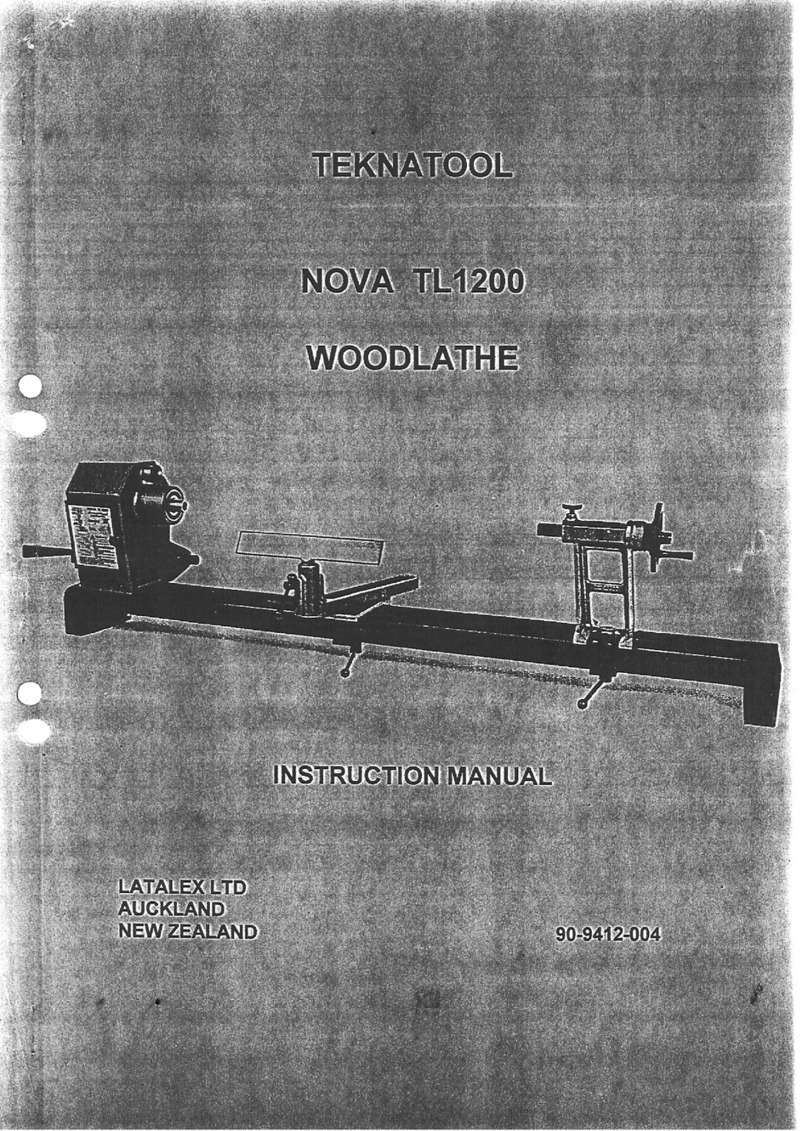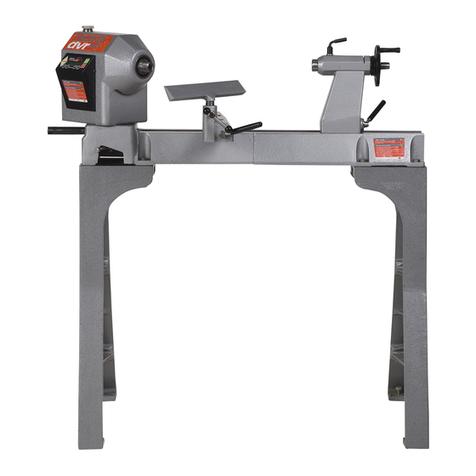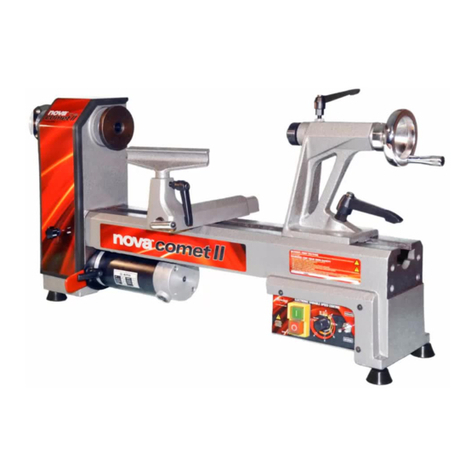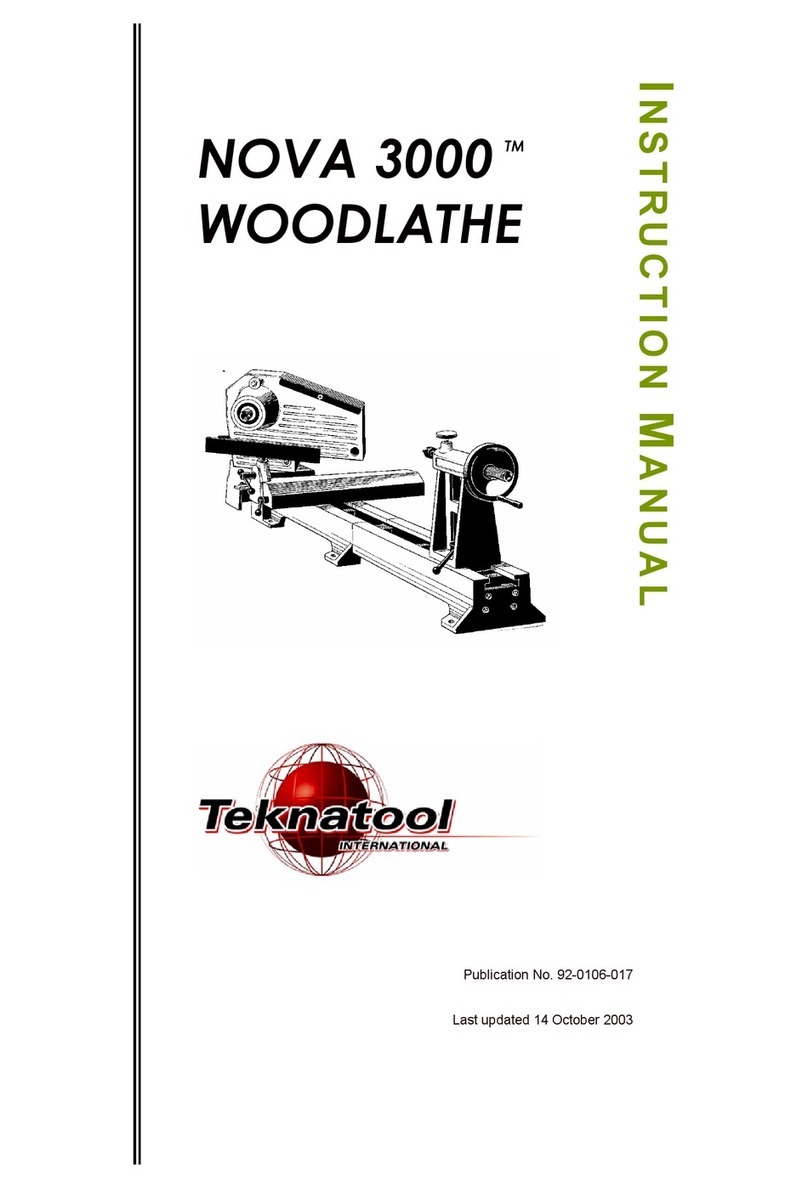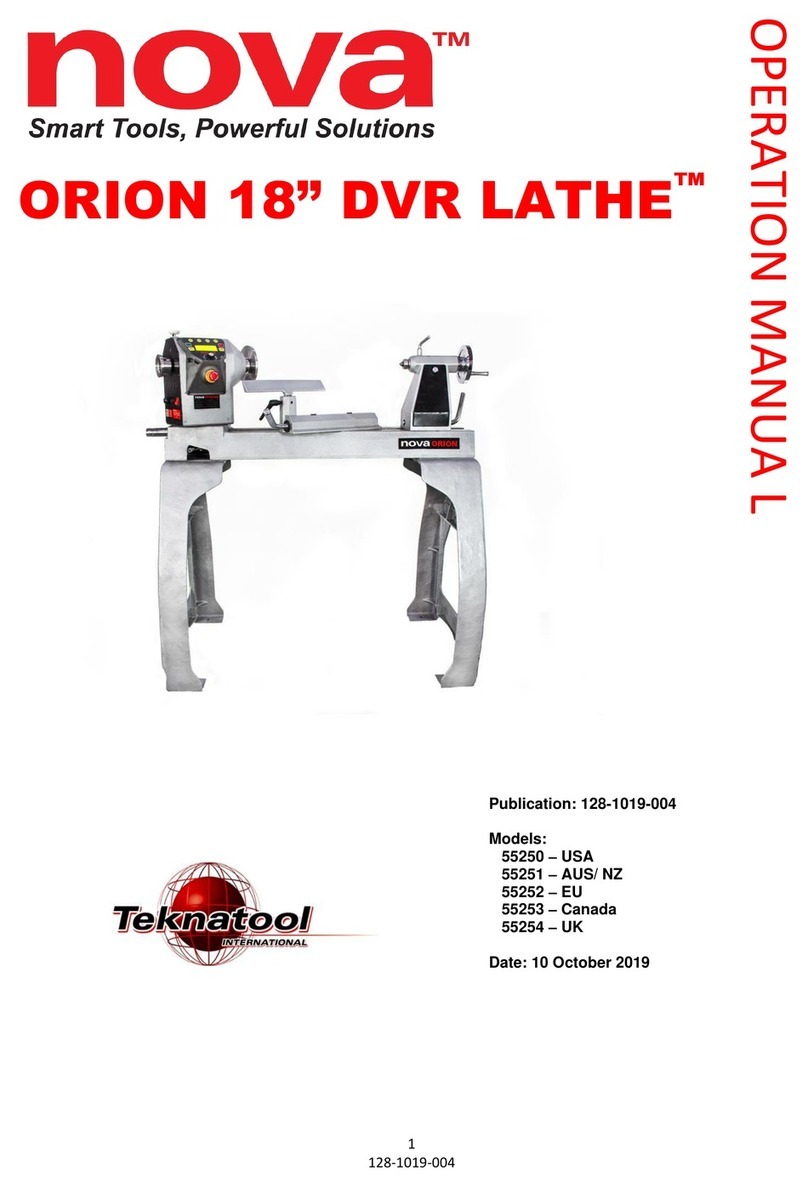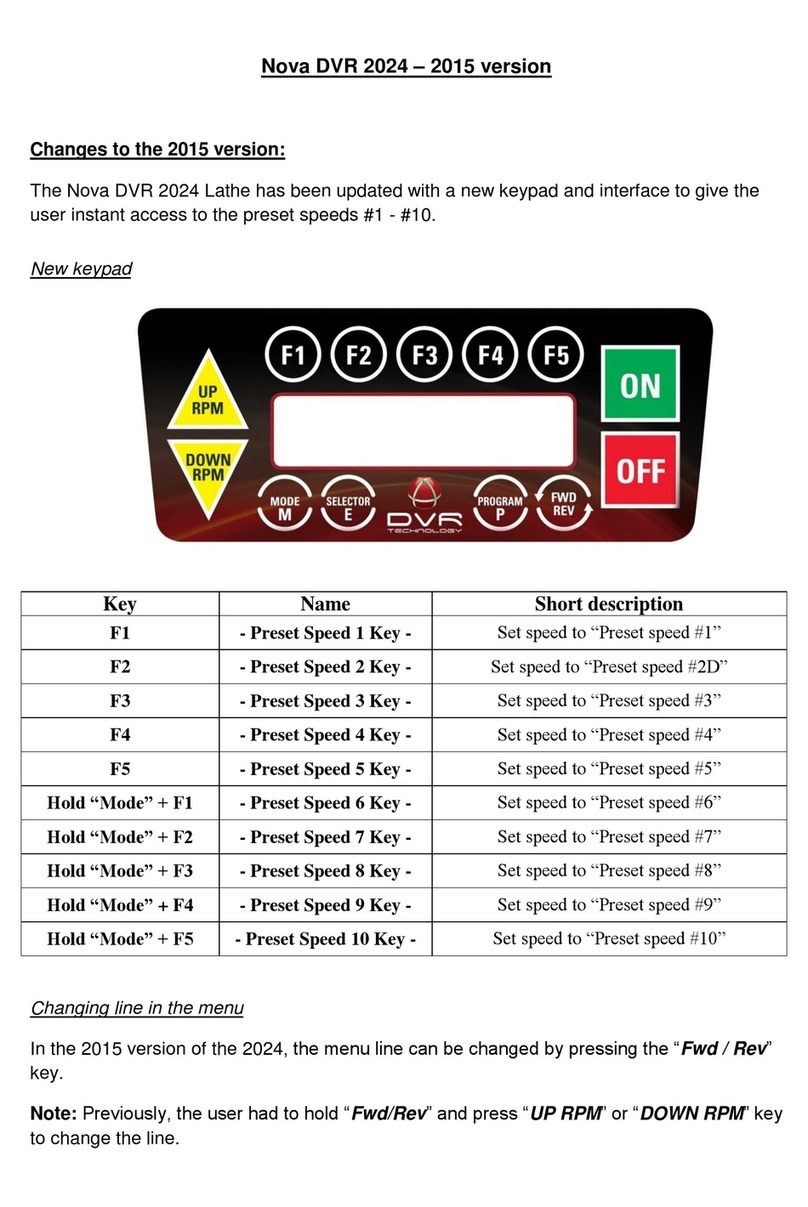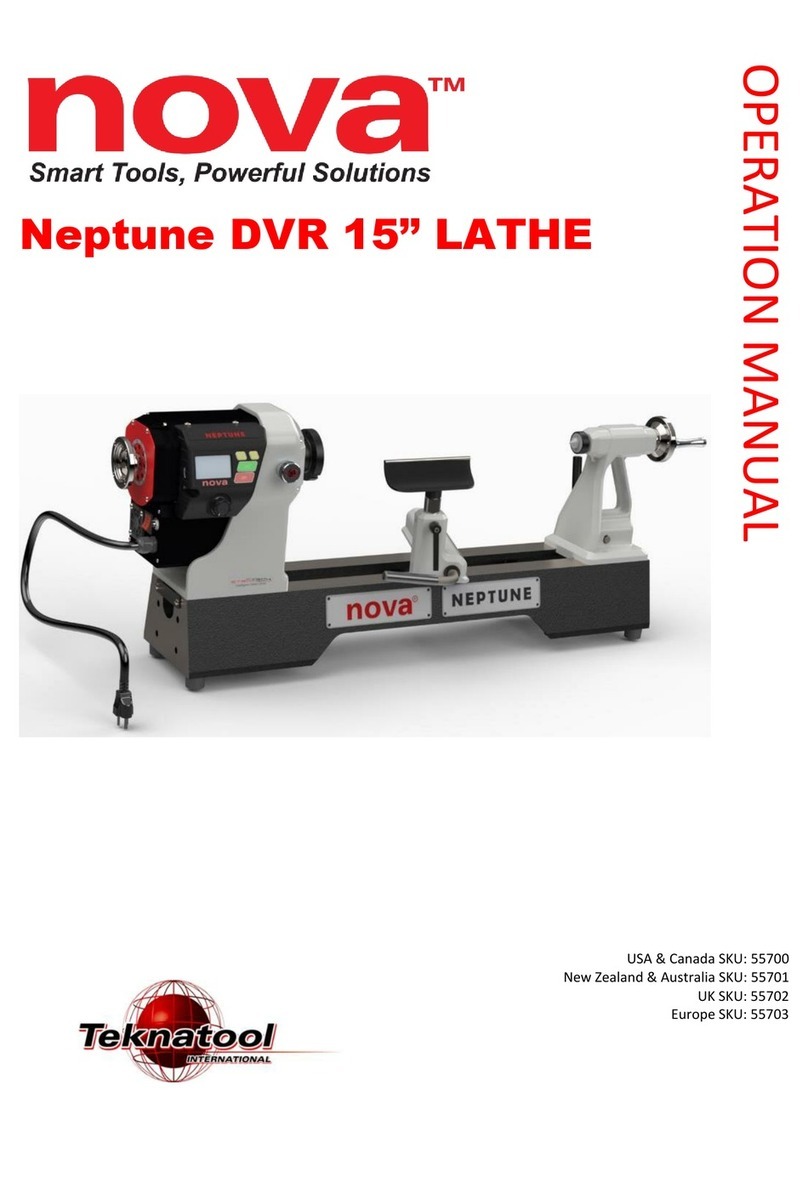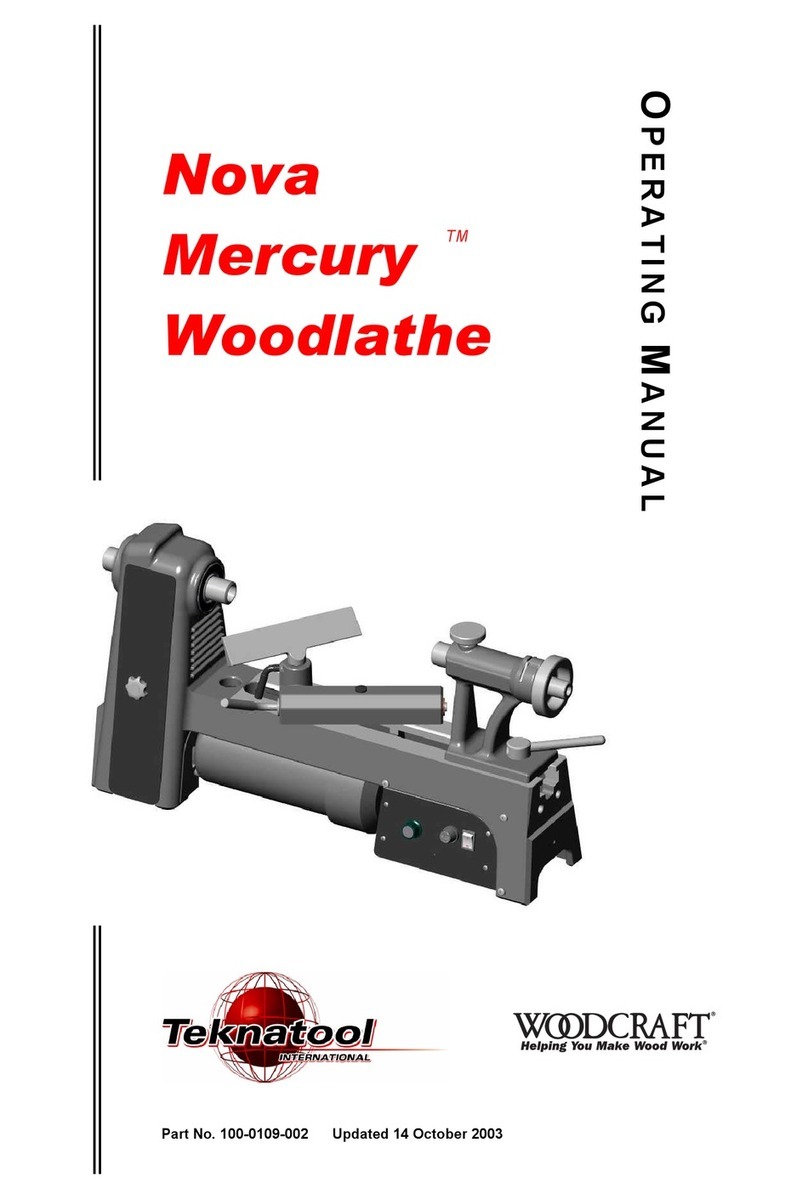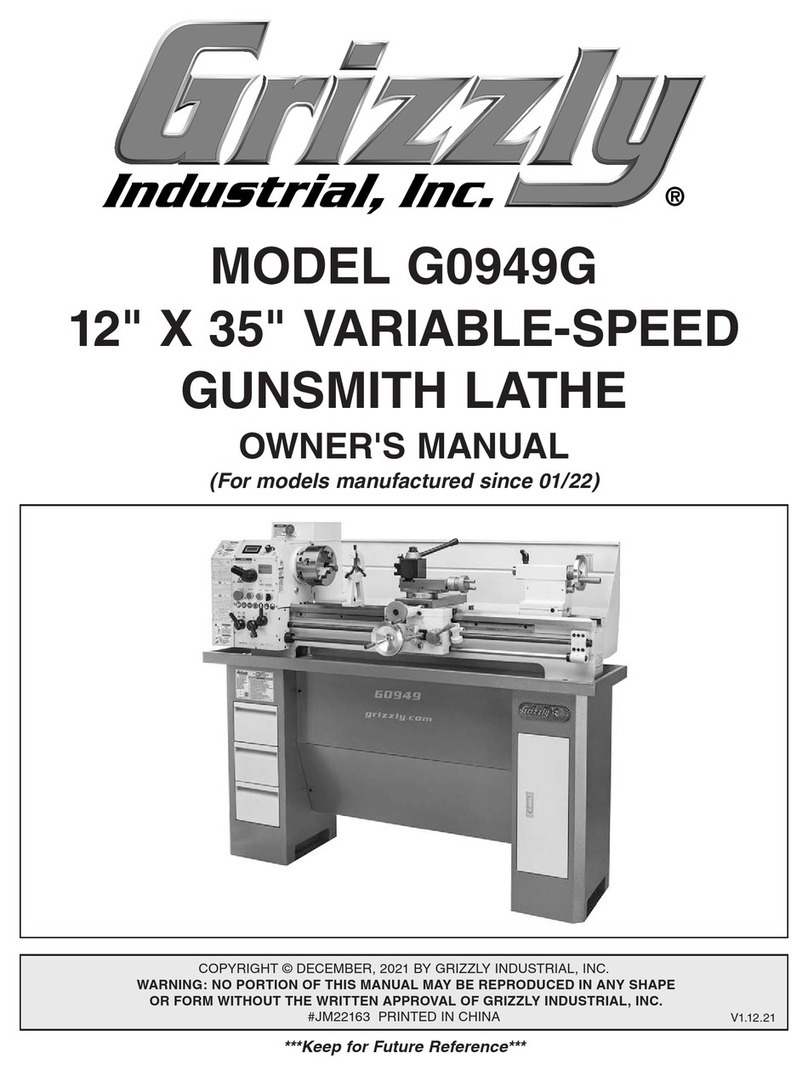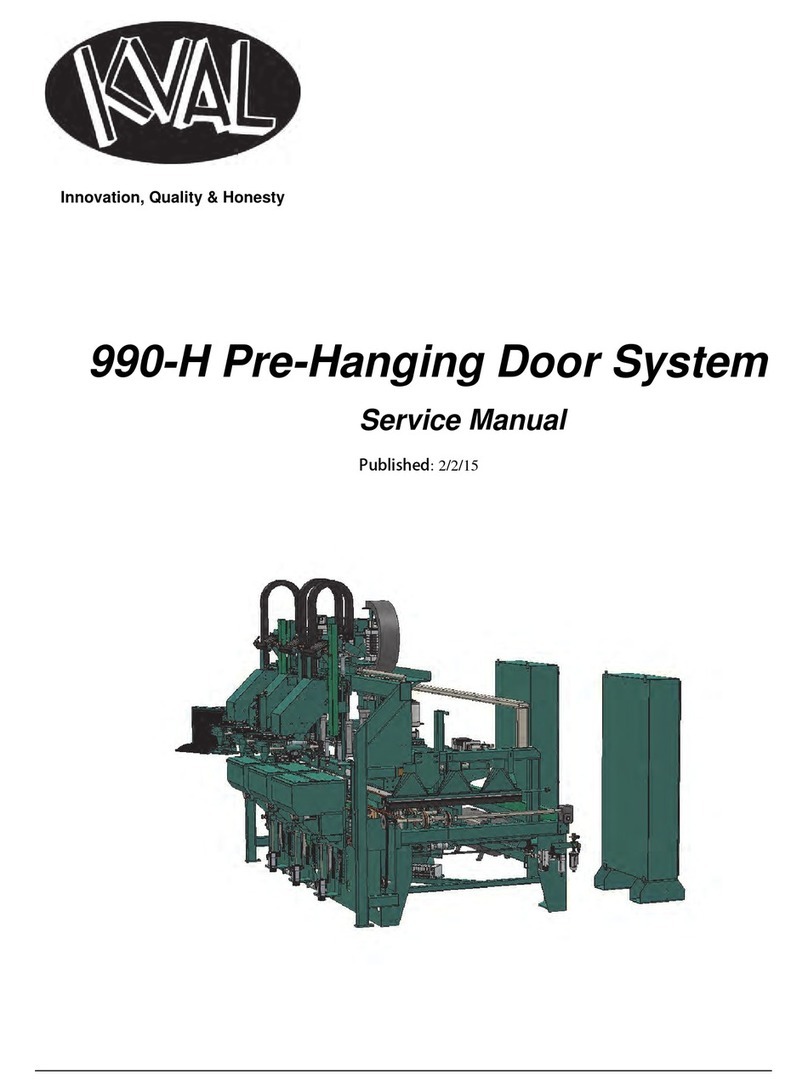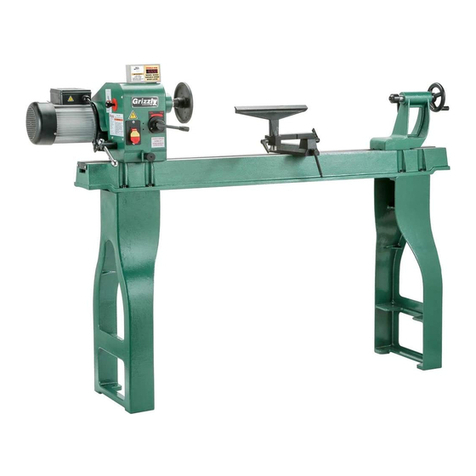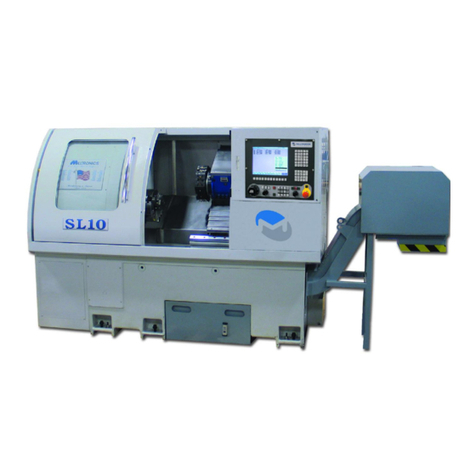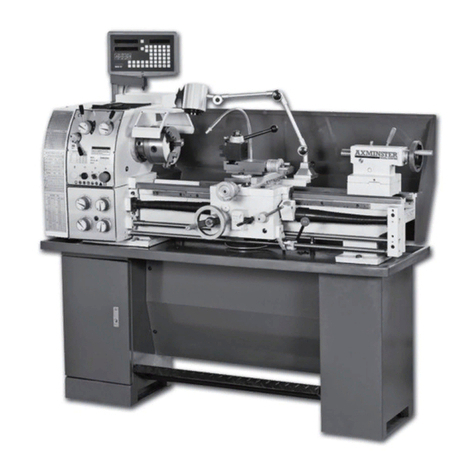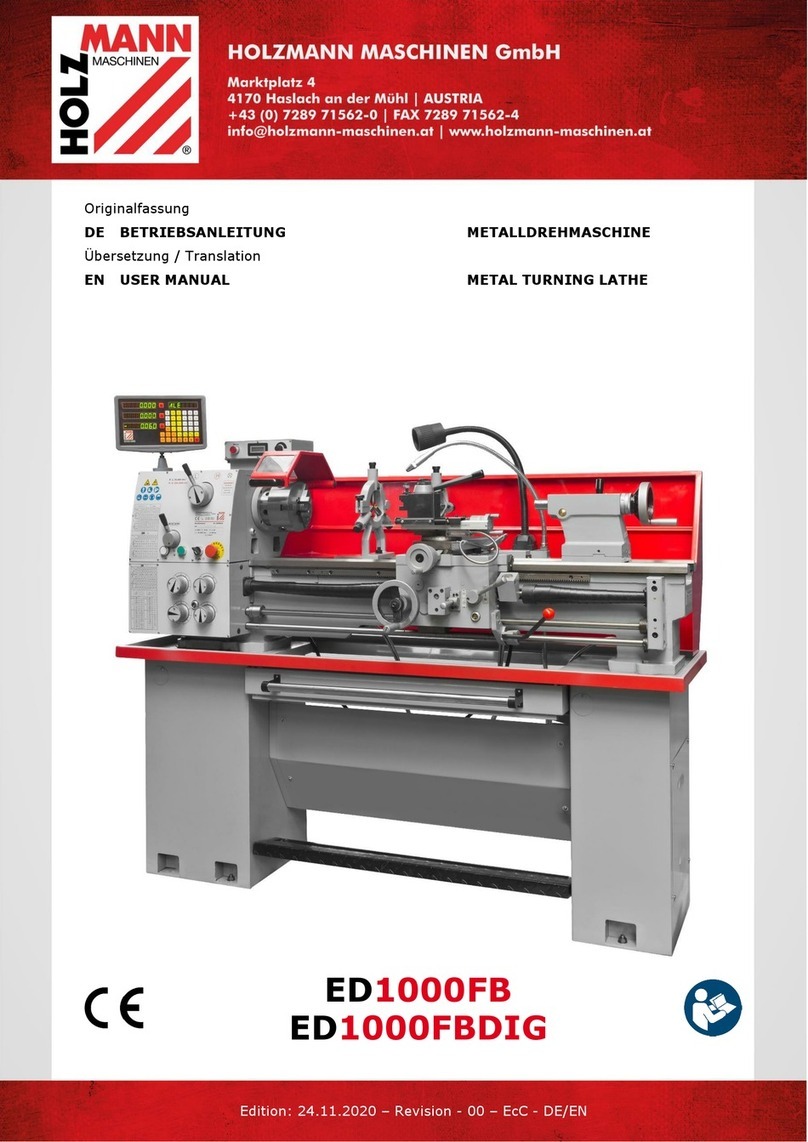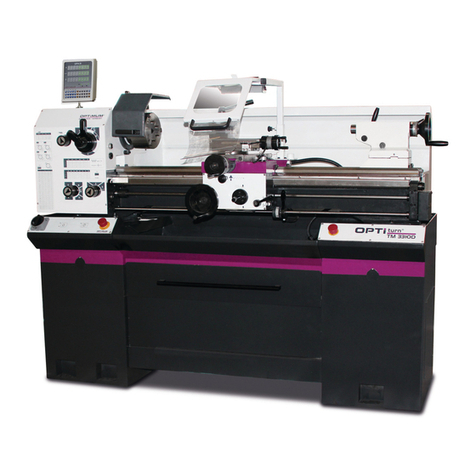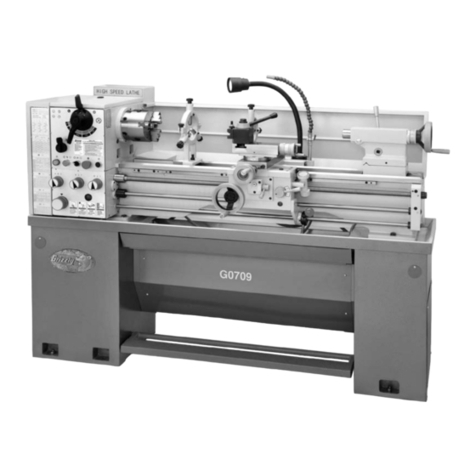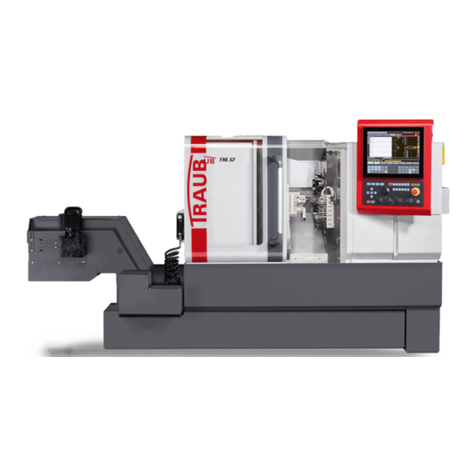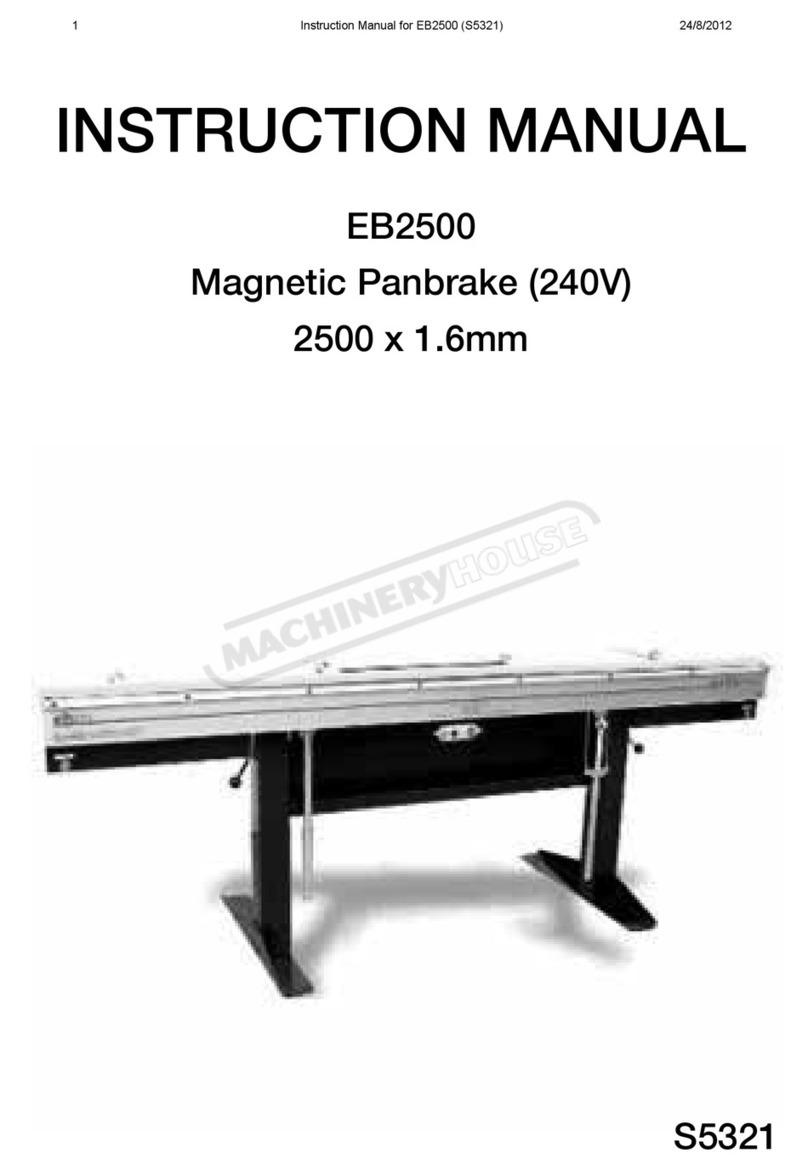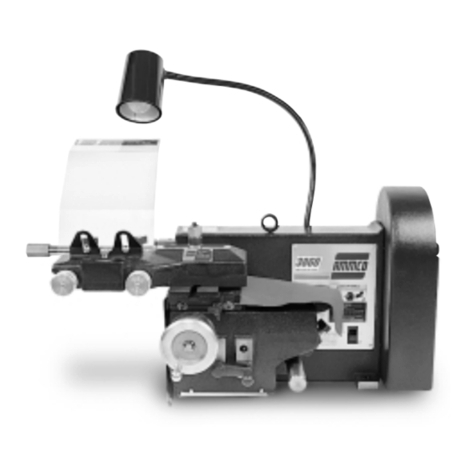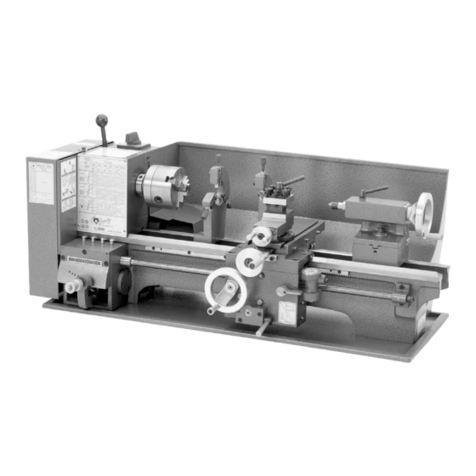
ix 115-0917-010
ADDITIONAL SAFETY RULES FOR WOODLATHES
Warning! Failure to follow these rules may result in serious personal injury.
Important: ALWAYS BEFORE SWITCHING SPINDLE ON, CHECK SCREEN FOR CORRECT SETTING
1. DO NOT MODIFY OR USE LATHE FOR USES
OTHER THAN FOR WHICH IT WAS DESIGNED.
2. SEEK INSTRUCTION. If you are not thoroughly
familiar with the operation of woodlathes, obtain advice
from your supervisor, instructor, or other qualified
person. Instruction from a qualified person is strongly
recommended.
3. DO NOT OPERATE LATHE until it is completely
assembled and installed. Follow instructions and
recommendations.
4. FOLLOW ELECTRICAL CODES. Make sure wiring
codes and recommended electrical connections are
followed and that the machine is properly grounded.
5. WHEN REPLACING THE FUSE (on relevant models),
completely isolate power when removing the fuse. It is
imperative the plug is removed from the mains supply
before the fuse is removed. Replace fuse cap before
reconnecting to mains.
6. DVR SATURN; Do not open the switch and rear
covers. Components can carry dangerous voltages
even when isolated from mains power.
7. DVR SATURN; Always ensure spindle fixtures (e.g.
faceplates etc) are locked to spindle in case spindle
reverse is engaged. Otherwise they will unwind from
spindle. See "Mounting a Faceplate to a chuck" section.
8. WHEN SPINDLE REVERSE IS ENGAGED DO NOT
USE CHISELS OR CUTTING TOOLS - USE FOR
SANDING ONLY
9. KEEP WORK AREA CLEAN. Do not turn the lathe on
before clearing the lathe of all objects (tools, scraps of
wood, etc.). Keep the nearby area and floor clear of
debris.
10. CHECK SET-UP with spindle Off. Examine the set-up
carefully and rotate the work piece by hand to check
clearance and check speed is correctly selected before
turning on spindle.
11. DO NOT MAKE ADJUSTMENTS when the lathe or
work piece is turning. Make all adjustments with power
Off.
12. TIGHTEN ALL CLAMP HANDLES on the headstock,
tailstock, and tool rest before operating lathe.
13. EXAMINE WORK PIECE and glue joints before turning
to make sure it has no defects that would cause it to
break when turning.
14. DVR SATURN; ALWAYS CHECK CORRECT SPEED
IS SELECTED BEFORE SWITCHING ON SPINDLE
15. USE LOWEST SPEED when turning a new or
unbalanced work piece.
16. TURN AT RECOMMENDED SPEED. Always operate
the lathe at the recommended speeds. Consult this
manual for suggested speeds.
17. ADJUST TOOLREST close to the work piece. Before
turning, revolve the stock by hand to make sure it
clears the rest. At intervals, stop the lathe and readjust
the tool rest.
18. KEEP TOOL ON TOOLREST. The lathe tool or chisel
should be on the toolrest before the lathe is turned On.
Tools should remain on the toolrest whenever the tool is
engaged in contact with the work piece REMOVE
TOOLREST when sanding or polishing so fingers do not
get pinched.
19. USE CORRECT LATHE TOOLS. Do not use spindle
turning chisels for faceplate mounted work, and vice versa.
Spindle turning tools used for faceplate mounted work may
grab the work piece and pull the chisel from your control.
20. WHEN ROUGHING STOCK do not jam the lathe tool or
chisel into work piece or take too big a cut.
21. DO NOT POUND WORK PIECE into headstock drive (spur)
center when turning between centers. Pound the drive
center into the work piece with a soft mallet before installing
it between centers in the lathe.
22. DO NOT USE TAILSTOCK to drive work piece into the
drive (spur) center when turning between centers. Secure
work between centers with light pressure from the tailstock
quill action.
23. FASTEN STOCK SECURELY BETWEEN CENTERS.
Make sure the tailstock is locked before turning on the
power.
24. NEVER LOOSEN TAILSTOCK SPINDLE or tailstock while
work piece is turning.
25. CORRECT USE OF FACEPLATE. When faceplate turning,
make sure work piece is securely fastened to the faceplate
and that appropriate size faceplate is used to support the
work piece. Any screw fasteners must not interfere with the
turning tool at the finished dimension of the work piece.
Rough-cut the work piece as close as possible to finished
shape before installing on faceplate.
26. DO NOT OPERATE LATHE IF DAMAGED OR FAULTY. If
any part of your lathe is missing, damaged or broken, in any
way, or any electrical component fails, shut off the lathe and
disconnect the lathe from the power supply. Replace
missing, damaged, or failed parts before resuming
operation.
27. ADDITIONAL SAFETY INFORMATION regarding the safe
and proper operation of this product is available from the
National Safety Council, 444 N. Michigan Avenue, Chicago,
IL 60611 in the Accident Prevention Manual of Industrial
Operations and also in the Safety Data Sheets provided by
the NSC. Refer to the American National Standards Institute
ANSI 01.1 Safety Requirements for Woodworking Machines
and the U.S Department of Labor OSHA 1910.213
Regulation.
Guidelines to symbols used in this manual:
Warning Symbol. Pay close attention!
Note/Information Symbol. Please read -
important information for you.
